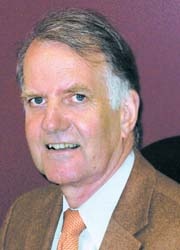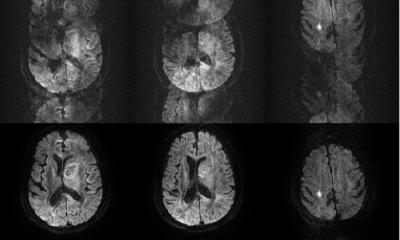From mobile phone to mDevice
Claus Peter Waegemann , CEO of the Medical Records Institute (MRI) in Boston, USA, has promoted the idea of electronic patient records (EPR) internationally for 25 years.

Naturally, the potential of mobile phones for EPRs developed: In August 2008, the MRI founded the Centre for Cell Phone Applications in Healthcare (C-PAHC), with Claus Waegemann as its Executive Director. ‘In about seven years, 90% of clinicians will use the cell phone as a medical device (mDevice). By this time the mobile phone will be implemented in a number of key applications from administration, financing to care giving, disease management programmes, research, preventive care and so on.’
This, as he puts it ‘historical change’, becomes feasible because cell phones are increasingly becoming multifunctional devices, developing into multimedia tools, digital cameras, electronic organisers and web portals. In future healthcare, much more important than the phone function will be the computing and browser functions enabling the user to access web-based systems, he pointed out. The era of mDevices starts as a simple cell phone, moves through smart phones and Personal Digital Assistants (PDA) and will lead to wireless personal health systems that collect and analyse data, serve as decision support to physicians and will induce patients to manage their health actively. ‘The patient of the future will be more autonomous. Already today people research information about their diseases, best treatments and best specialists. When more and more consumers will start to ask their hospital or doctor’s office to download or send their health and insurance information via cell phone, many providers will see the necessity to move quickly toward systems that can facilitate these functions. Hundreds of software systems are already available and more are under development. I believe that this field is about to explode onto the international healthcare scene.’
Doctors will also benefit, at the point of care, from web-based resources through the mDevice browser, because they could, for example, either draw on specialty software for specific symptoms and diseases or patient groups etc., or could look through EBM-based guidelines and protocols. ‘Statistics show that about 80% of all physicians who come out of medical school really want to use the mDevice for documentation and various other processes in healthcare. When people say older physicians are not really interested in using it, this is not true. I have seen, in many clinics, physicians in their late 60s who have managed to be more efficient with their cell phones, smart phones and PDAs than some younger colleagues.’
The most important thing will be data security, Claus Waegemann points out. The systems must be safe, secure and reliable. On the one hand, the web-based information must have a signature, to enable identification of the information provider and ensure non manipulation of data. Cell phones must also be designed to keep data safe and secure even if a phone is lost or stolen. ‘All this is achievable,’ he believes, ‘but nevertheless it will take some more time to win people’s trust in the technique.’
01.03.2009











